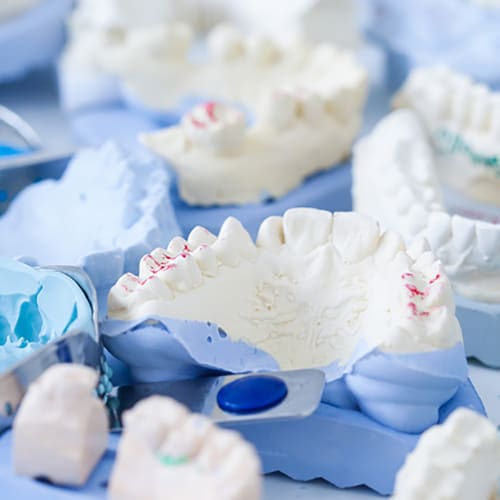Impressions help you perform evaluations of your patients' teeth and are used to create models for building whitening trays, crowns, bridges, dentures, night guards, sports mouthguards or appliances related to orthodontics. The accuracy of a given impression is crucial to the fit of the end product. Everyone knows that technology has had an amazing impact on dentistry – from digital radiography to paperless offices – and one of the more exciting aspects is the transition to digital impressions. Today, many offices still offer conventional impressions alongside digital impressions. But which is best for you and your patients?
Conventional Impressions
Conventional impressions are the mainstream technique used to create models and replicas of the teeth, gums and preparations. The accuracy of conventional impressions is dependent on several factors, such as impression tray selection, proper placement of the impression material and tray over the dentition, control of moisture, and hydrophilic/hydrophobic properties. Impressions can be very uncomfortable for a patient with a strong gag reflex, as the impression tray and material rest against the palate. Even so, conventional impressions are still standard in dental offices around the country.
Digital Impressions
Digital impressions are taken with a digital scanner placed directly in your patient's mouth. Once the data has been captured, it is stored and ready to be viewed and shared immediately. Using a digital scanner creates a more comfortable experience for patients who gag. Some of these scanner systems even include a chairside milling machine to support one-visit dentistry. Another option is a scanner that scans a conventional impression – this does not avoid the impression for the patient, it scans the impression to digitize it for the lab.
There are several digital systems currently available for purchase, reports Inside Dentistry. These systems use different imaging systems to create 3D images. Imaging systems include technologies like triangulation, blue light, full-color video capturing, active wavefront sampling and parallel confocal imaging.
So How Do They Compare?
It typically takes about the same amount of time to take a digital impression as it does for a conventional impression. One advantage of digital impressions is the effect on your patient's comfort. A less intrusive scanner avoids triggering a sensitive patient's gag reflex compared to a traditional impression.
Conventional impressions can also have small distortions that may not be readily visible, resulting in the restoration being made based on a poor impression, and then not fitting. If you go digital, errors are still possible, such as those caused by moisture or poorly managed soft tissue making it impossible to accurately scan the area. However, the images from digital impressions avoid impression material and model pouring errors, and the images can be viewed on the monitor. This means that the image can also be enlarged on the screen for detailed viewing. If the scanned image is not satisfactory, it is possible to retake the digital impression there and then, review the image and check it is accurate before sending it to the lab or using it for chairside milling. This save time for the patient and the office, and avoids incurring the cost of refabricating a restoration later when it's discovered the first one did not fit.
Of course, a major issue in any new equipment purchase is staff training. As reported in RDH Magazine, for a digital impression system to be efficient, the staff using the device will need time to learn the new technology. Most of all, if you or another member of your team isn't fully on board with a particular digital impression system, it may not be as useful in your practice as it could be. In these cases, additional discussion and training may be needed to help with the transition to and use of digital impressions.
Takeaways
- Digital impressions the used to view the image on the monitor, and it's possible to zoom in to check for discrepancies and retake the image if necessary.
- Digital impressions are great solutions for patients with sensitive gag reflexes.
- Conventional impressions are still standard procedure in many dental offices.
Why It's Valuable
It's worthwhile for the dental office to keep up with the ever-changing technology of dentistry. Digital impressions, while not right for every practice, can provide added comfort to your patient and a streamlined digital workflow.
More Articles You May Like:
How to Alleviate Dental Anxiety for a Stress Free Appointment Read More >
Five Organization Tips to Stay on track During the Day Read More >
Five Easy Stretches for Shoulder Pain Read More >


Was this article helpful?
If you’d like a response, Contact Us.